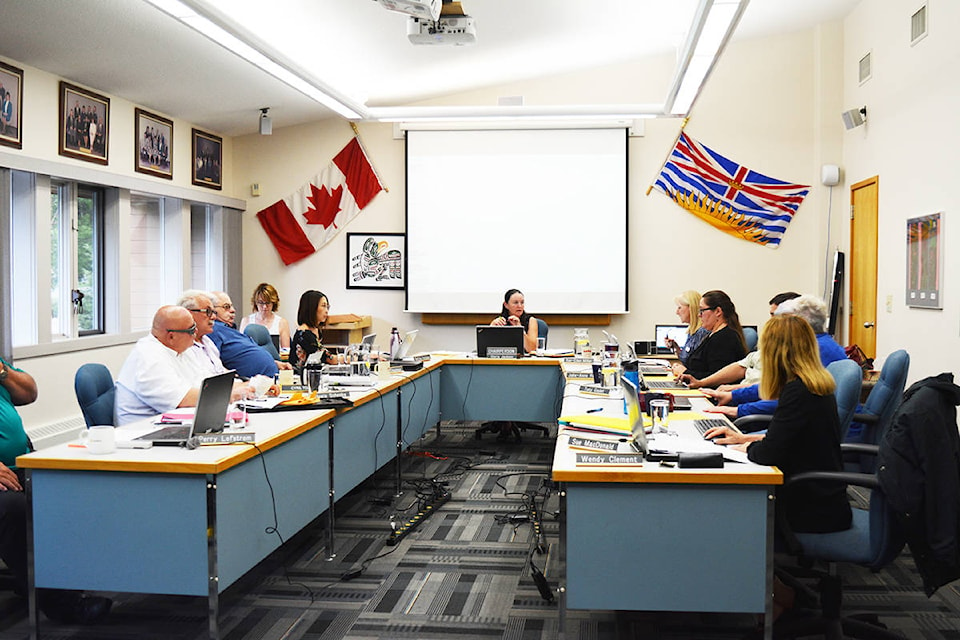The Quesnel School District will carry on with a two-week spring break after hearing from the community that the longer break is their preference.
The Quesnel School District agreed to a trial two-week spring break for the 2018-19 and 2019-20 school years, and this past year, a Spring Break Committee, with representation from the board of education, senior team, Quesnel District Teachers’ Association (QDTA), CUPE and Principals and Vice-Principals Association, met three times to determine how to collect feedback from stakeholders.
Parents, CUPE staff and community partners (daycare/preschool providers, community services, and local First Nations) were surveyed after the first year of the trial.
Five hundred and fifteen parents replied to the survey, and 68 per cent voted in favour of the two-week break, with 32 per cent favouring a one-week break.
One hundred and 56 CUPE staff members answered the survey, with 63 per cent supporting a two-week break and 37 per cent supporting a one-week break.
Twelve community partners responded to the survey, with 58 per cent voting for a two-week break and 42 per cent voting for a one-week break.
At the June 19 school board meeting, trustees voted to continue with a two-week spring break on an ongoing basis.
Trustee Tony Goulet was the only one who opposed the recommendation, as he had concerns about the impact of that extra week on families who have a hard time paying for extra daycare, for example.
“For me, there’s a big piece about vulnerable kids,” he said. “For me, I’m looking at going back to a one-week spring break. I think there’s a vulnerability piece there, and we have to figure that out as we move forward. It has a big impact on them.”
Trustee Julie-Anne Runge noted that some of the vulnerable groups responded favourably to the survey, which makes her think there are services out there to support them.
Trustee Cyril Tobin is the one who made the recommendation to continue with the two-week break.
“Our senior administration did a great job of gathering data, and our community is in favour of it,” he said. “When we ask for that feedback and we get that feedback, it’s too heavy-handed for us to go against it, so I’ll be voting for two weeks.”
Board chair Gloria Jackson sat on the Spring Break Committee and says she is a little disappointed more people didn’t respond to the survey, but it’s clear people want the two-week break. As well, a two-week break is consistent with other districts, she noted.
“The principal at McNaughton said attendance was better this year, and she feels the two-week break might have something to do with that,” she said.
Superintendent Sue-Ellen Miller told the board there is a trend across the province to two-week spring breaks. She also pointed out that saying yes to a two-week spring break continuing now does not mean the district can’t change it two or three years down the road if the board hears that the community wants a one-week break.
At the June 19 board meeting, QDTA president Dawn Rodger read a letter from the association stating that in May 2012, a survey of membership showed overwhelmingly a majority of the association’s members were in support of a two-week spring break. The QDTA revisits this survey every year, where it is re-affirmed.
“This year, teachers are strongly advocating that the two-week spring break be maintained on a permanent basis,” she said. “Due to the teacher shortage, crowded schools, the need for in-service and meetings outside of the school day, as well as the complexity of classrooms, means that teachers are working longer hours and consistently giving additional time to their students and the profession. This, in turn, is leading to fatigue and general wellness issues.”
Rodger told the board she believes keeping a two-week spring break supports teacher wellness.
“A two-week spring break allowed teachers the time to re-energize and to take care of themselves,” she said. “It’s important to allow adequate time for teachers to do this to ensure they can perform at their best when they return to work. They came back to school after the break re-charged and ready for the next busy term.”
This year, the QDTA asked for feedback after spring break.
“Interestingly, the feedback talked about not just how it impacted them and how much better equipped they felt when they came back, but of all the positive things they heard from students and how the class was much more settled when they came back, and kids talked a lot about having time to visit with family,” said Rodger. “The kids had a lot of positive things to say, and I think for teachers, that was really good feedback for them because you’re always concerned about how your students are doing over that extended break. They felt that they really benefited and that students really benefited from the two-week break, so as I say, we are definitely in support of the two-week spring break.”
On behalf of CUPE, Local 4990 president Jeanette Beauviller told the board those CUPE members who filled out the survey were in favour of the two-week spring break, although only half the membership completed the survey. Two of the CUPE departments lost wages with the two-week break, and for that reason, she could not fully support it.
“As president of Local 4990 and a representative of CUPE, I would be doing a disservice if I did not stand up for the members who have lost wages with this decision. CUPE can never be in favour of a decision that leaves members less than whole or with a week less of pay that they originally had before we made this decision.”
